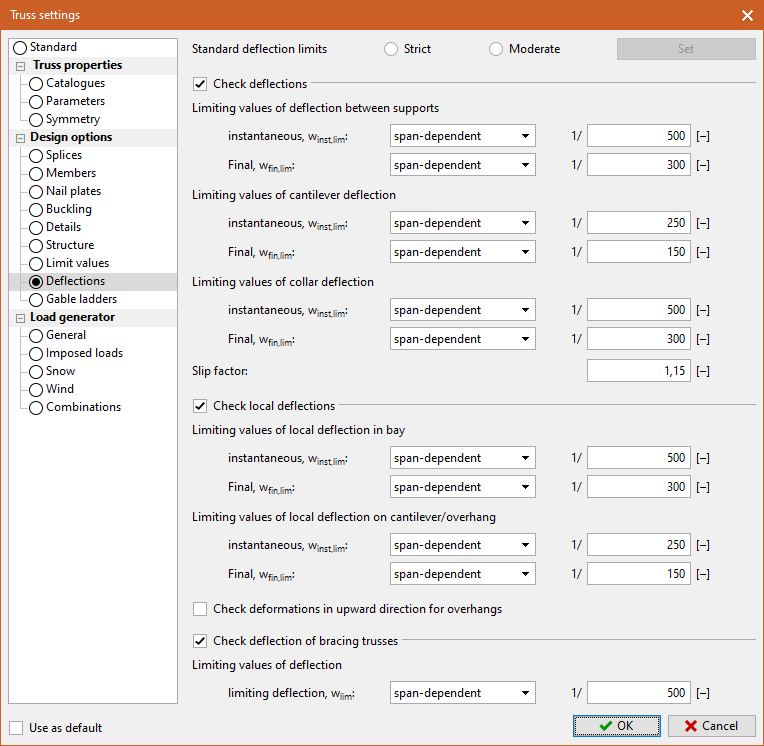Deflections
This section includes the possibility to define the deflection limits used in the design of the structure. In the frame header, it is possible to quickly set moderate or strict limits according to the standard, as EN 1995-1-1 specifies the limits by means of a range. Quick setting of limits can be done by selecting the appropriate limit type and pressing the "Set" button.
Limits can be defined either as an "absolute value" in millimeters or as a proportion of the span ("span-dependent").
The deflection limits are divided into three sections. The assessments in each section can be disabled by checking the checkbox in the section header.
Check deflections
This section contains deflection tests of the entire truss. Limit values can be entered for the inner field of the truss between supports, for the free part of the truss overlapping the outermost support and for the collar beam.
The value of the "Slip factor" allows the resulting deflection to be multiplied by the specified coefficient, thus taking into account the effect of joint slip. It can only be used if the stiffness of the connections selected in the "Standard" section for serviceability limit states is without the effect of joint slip.
Check local deflections
This section contains limit values for the assessment of deflection of individual bays and overhangs of outer members. By default, upward deformations of overhangs are not checked, since in the case of small overlaps adjacent to long spans, the overlap deformations result disproportionately unfavorable compared to the span-dependent limits, even if their absolute magnitude is negligible. However, this can be turned on using the "Check deformation in upward direction on overhangs" setting.
Check deflection of bracing trusses
In the case of the "bracing truss" type, deflection is controlled within the ultimate limit states, because the deflection of the bracing truss defines the planarity of the braced trusses. It therefore affects the overall load capacity and stability of the structure, not the appearance or functional limitations. The default limit value is based on EN 1995-1-1, Section 9.2.5.3.
 Part "Deflections"
Part "Deflections"